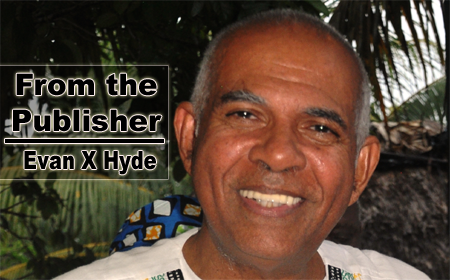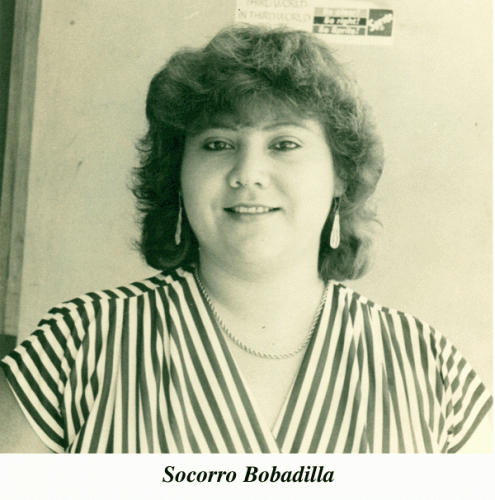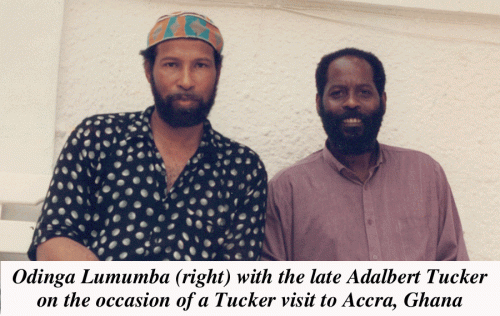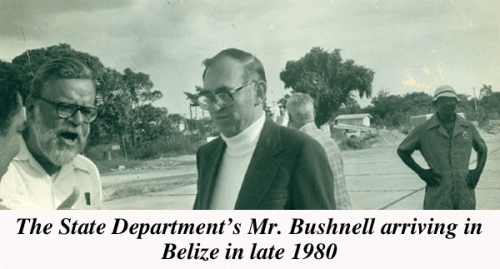This year’s September celebrations, the last before next April’s International Court of Justice (ICJ) referendum, are almost over. Soon, Settlement Day and Christmas will be upon us. After that, April 10 will stare us directly in the face. The days dwindle down, to a precious few, as the song says.
I find it strange that Belize never, ever reviews the incidents involved with the Heads of Agreement in mid-March of 1981. These incidents were unprecedented in my lifetime, and no events of equal drama have transpired in Belize since then.
I say I find it strange, but the silence is not strange if we had expected the then ruling People’s United Party (PUP), or the then Opposition United Democratic Party, which was in relative wreckage following their 1979 general election disaster, to want to remind Belizeans of the anti-Heads uprising, an uprising which may be blamed for the violent deaths of Sylvino Riveroll in Corozal Town and then of the musician/policeman Pete Matthews at the Queen Street Police Station.
It is strange that the incidents involved with the Heads are never discussed, because one would have thought that Belize’s academics would have been interested in examining the dramatic developments which led to the British Governor’s declaring a state of emergency in Belize on the afternoon of Thursday, April 2, 1981. In most societies, research/discussion by the scholars is considered as vital in order for the society to learn those lessons which extraordinary times can teach a people.
For me, the thing that jumps out with the events which followed the broadcast announcement of the Heads of Agreement on Radio Belize on the night of March 16, 1981, was that there was not that much of a buildup to the drama.
In late 1980, a State Department official by the name of Bushnell had visited Belize to tell Premier George Price and his PUP Cabinet that the United States government was finally prepared to support the independence of Belize. It would be interesting to know if Bushnell’s visit took place before or after the November 1980 presidential election in the U.S., wherein the incumbent, the Democrat Jimmy Carter, was soundly defeated by his Republican challenger, Ronald Reagan.
Carter was the one who had stopped arms shipments to Guatemala in 1977, and, unlike Reagan, who immediately began support for the Guatemalan generals after his inauguration in January of 1981, Carter was concerned about human rights and America’s relationship with brutal military dictatorships.
There is a fundamental continuity in the foreign policy of the State Department, but I am positive a Reagan-led administration would never have initiated support for Belize’s independence. In other words, Reagan probably met a fait accompli at State, a fait accompli which originated in the last days of the Carter administration. I stand to be corrected at any point here by the much esteemed scholar, Assad Shoman, who was inside the PUP Cabinet at the time.
Although this newspaper had been an important part of the PUP’s 1979 general election campaign, that election victory having set the table for the Bushnell visit in late 1980, the Heads of Agreement in March 1981, and the political independence of Belize in September of 1981, the Bushnell visit, cum independence announcement, convinced me to consider withdrawing from the newspaper business. Remember now, that even though Hon. C.L.B. Rogers had lost his Mesopotamia seat in the 1979 general election, he had remained Deputy Prime Minister and Minister of Home Affairs (Police and BDF), and presumably remained the second most powerful man in the Price Cabinet. Mr. Rogers had leaned on me so heavily after the December 1977 Belize City Council election that I had concluded that Amandala would not be tolerated by a PUP Cabinet in an independent Belize.
Premier George Price himself had not said anything to me, and two of my political friends, Assad Shoman and Said Musa, had become empowered as Cabinet Ministers following their victories in Cayo North and Fort George, respectively, in 1979. But still, I was intimidated by Mr. Rogers and his post-1977 behavior.
So that, I asked Mr. Musa to meet with me, and I told him I wanted the PUP to buy out the Hyde family’s 50 percent interest in Cream, Ltd., the limited liability company which owned the offset equipment which was printing the newspaper. Mr. Musa told me one week later that Mr. Price had agreed to buy some of our family’s shares, but I told Said that the deal was all or nothing.
The PUP owned 50 percent of Cream, Ltd., with Mr. Musa owning 80 percent of that 50 percent. A few months ago, I asked Hon. Florencio Marin, Sr., who had been a minority PUP shareholder in Cream, Ltd., if he had ever heard of that meeting between Mr. Musa and myself, and, developments afterwards. He said no.
I’ve been sidetracked a bit. In this column, my intention was to point out that there were certain elements of volatility in the Belizean society which existed with respect to the ICJ referendum from months ago. For that reason, Derek Aikman sought to take leadership of the “no”agenda two or three months ago. He failed. For that reason, Richard Harrison planned a similar initiative for Independence Day in Belmopan, but it has been reported recently that he cancelled the initiative. But, the elements of volatility remain around us, and these elements will only become more volatile as the days dwindle down to April 10.
This was not the way it was in early 1981. The hurricane surrounding the Heads after March 16, 1981, came as if out of nowhere. And to a great extent, the poster guy and poster girl of the Heads uprising, Odinga Lumumba and Socorro Bobadilla, emerged out of thin air. This was especially so in the case of Socorro, a student of Belize Technical College at the time.
Odinga had been a known, militant activist in London who had flown to Belize in 1969 and joined the young UBAD movement between April and September, say. He had returned to London in September of 1969, then travelled to West Africa, specifically to Mali and Ghana. At some point, he had become an orthodox Muslim. Lumumba was known in Ghana as playing an extraordinarily powerful role in the government of Flight Lieutenant Jerry Rawlings in Ghana in the late 1970s.
So Belizean activists knew of Lumumba. He had been deported to Belize in late 1980, but he had lain quiet until the Heads. Rufus X has claimed on more than one occasion that Lumumba’s role in the Heads uprising was overplayed by the media. But, for me and many like me, Odinga was The Man in Belize City where resistance to the Heads in March/April of 1981 was concerned.
The chances are that somewhere out there are an Odinga and a Socorro. It seems clear that Belize’s security forces are preparing for some kind of disturbance in connection with April 10. This was not the case with the Heads of Agreement. The area of disturbed weather in March of 1981 began with the public officers in the Public Service Union (PSU). After the PSU decided to strike, one thing led to another. In the case of April 10, anyone and everyone can see that the issue is so huge, and frightening, that the Belizean people are agitated.
Power to the people.




